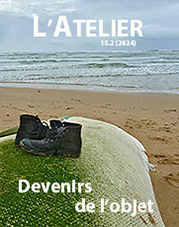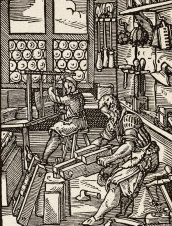Moving Objects, from Prosthetics to Affects: Metonymic Ontologies in Harry Parker’s Anatomy of a Soldier and Hybrid Humans
Résumé
Harry Parker’s writings, whether his novel Anatomy of a Soldier (2016), or his recent essay, Hybrid Humans (2022), draw complex relationships between objects and human beings. In his debut novel the objects narrate the events that led up to and followed the human character’s loss of his legs. They take responsibility for some of the characters’ sufferings or substitute themselves to human bodies, their lifespan sometimes exceeding that of their counterparts of flesh and blood. Thus, the “soldier” shifts in and out of focus, becoming at times a secondary character or even a mere prop in a story that should have been his.
Parker’s approach in Hybrid Humans confirms that of Anatomy of a Soldier. Drawing from his own experience as an amputee, Parker goes on to explore the interdependences between human beings and objects. Although this essay does not endow “things” with a voice, it goes perhaps even further as the author comes to wonder to what extent objects can, paradoxically, become the very things on which one’s humanity hinges.
This article proposes to explore the ontological and representational ambiguities surrounding objects in these two texts through the figure of the metonymy. I wish to show how Parker’s objects carry – metonymically – what remains of human experiences, but can, conversely, affect and transform the very essence of the human that rely on them. Eventually, I show how Parker’s metonymic reversals reorganise the logics of representation and call for an ethical reconfiguration of our frames of perception.
Keywords: objects, things, metonymy, disability, affects, ontology, posthuman, relationality, ethics, representation
Téléchargements
Publiée
Numéro
Rubrique
Licence
-
L’envoi spontané d’un article à la rédaction de L’Atelier implique l’autorisation de publication et la cession des droits dans les limites établies par la loi de propriété intellectuelle.
-
L’Atelier conserve les droits de reproduction des articles publiés, quelque soit le support : internet, CD ROM, réimpression, photocopie, etc.
-
L’auteur conserve le droit de publier ultérieurement son article déjà paru dans L’Atelier avec la seule obligation de mentionner le nom de la revue comme source de la première publication.


